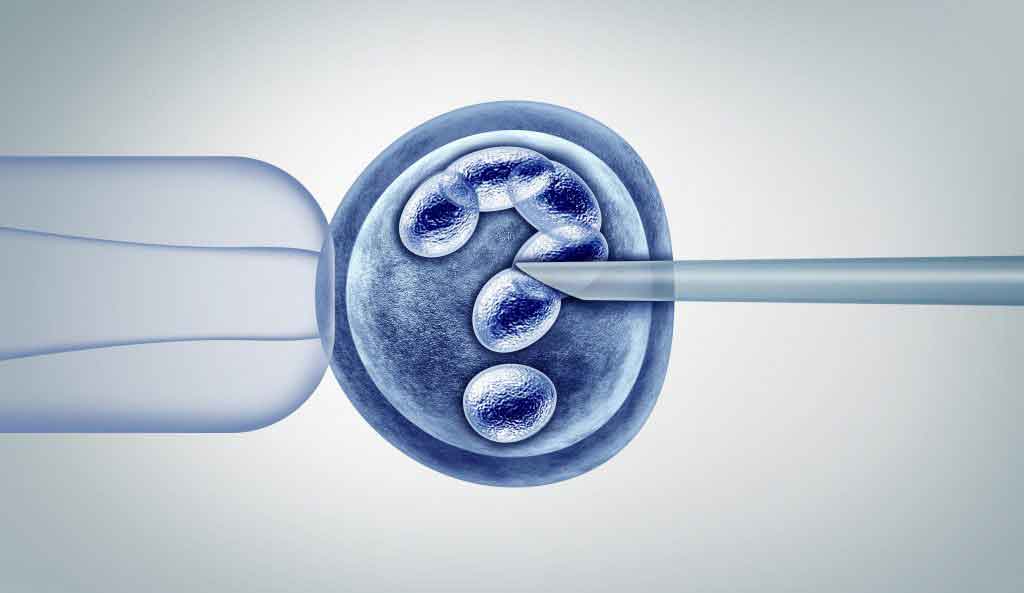In Vitro Fertilization (IVF)
Learn
In vitro fertilization (IVF) is the process of fertilization by extracting eggs, retrieving a sperm sample, and then manually combining an egg and sperm in a laboratory dish. The embryo(s) are then transferred to the uterus. IVF has become a hot topic that is important to highlight as an issue that affects the pro-life movement directly. IVF has a profound impact on the way we view the dignity and value of every human life, both in and outside the womb.

The infertility industry in the United States has been a booming industry for decades, with researchers predicting revenues to be as large as $36 billion by 2026. (1) This includes the multi-billion-dollar business of egg donation. Young girls are showered with provocative ads promising big checks and the satisfaction of helping others who are unable create a family by simply donating her eggs.
But the lesser-publicized side of this seemingly selfless act include the deception behind coercing young donors for their eggs, exposing them to the sometimes lifelong damaging methods of extracting them, including hormone overdoses, unsafe medical practices, lack of informing women of health risks attached to donating, and, all too often, no follow-up care at all. Anyone interested in learning more about the risks and hazards of egg donation should check out Eggsploitation, a documentary that exposes this industry.
Similar to egg donation, IVF comes with its own unique set of risks. In fact, research is showing rising mortality rates among women and untreated PTSD like symptoms in women who miscarry after using IVF. Yet, this is not publicized as women who miscarry aren’t considered “success stories” and “failure stories” don’t sell. (1) Many people have replaced the truth about IVF’s damaging and destructive processes with the widely accepted notion that conceiving via IVF helps couples with fertility problems, promotes the growth and importance of a family unit, and finally allows struggling parents to enjoy the blessing of a child or children.
And it can do all those things.
But it doesn’t come without a cost. And not just its hefty $5,000 – $25,000 price tag.

Talking Points about IVF
- IVF promotes the discarding of “extra” human embryos – or developing humans.
IVF usually entails the creation of multiple human embryos to ensure a greater chance of successful implantation. These human embryos are then screened for genetic disorders, handicaps, and sometimes they are even screened for gender. The “undesirable” embryos are discarded. Normally, an IVF practitioner transfers around four of the selected embryos into a woman’s uterus. If more than one (or two) successfully implant, a physician will selectively abort (kill) the remaining embryos (Nadya “Octomom” Suleman refused this “embryonic discarding”, resulting in the delivery of octuplets). This selective mentality leads to the death of little humans based on their gender, physical and mental handicaps, and how many exist simultaneously. This segues into the second point:
- IVF often results in the conception of multiples, which in turn results in selective abortions after implantation, as well as a dangerous situation for both mother and children when the number of children who are implanted is unnaturally high.
Nadya Suleman, referenced above, refused to allow her IVF practitioner to discard of “extra” fertilized embryos selectively. Kate Gosselin of the 2000s TV show, Jon and Kate Plus 8, had a similar situation. Thankfully, both mothers refused to kill any of their children, thus bearing octuplets and sextuplets, respectively. Suleman and Gosselin by no means followed the status quo when it came to multiple implantations resulting in IVF. All too often, the unchosen embryos are destroyed. Additionally, a mother pregnant with multiple children is automatically put in the category of high-risk pregnancy. Therefore, even if a pro-life woman refuses selective abortion and carries all IVF-created children, she and her babies will be in an unnaturally dangerous situation.
- Prepping for IVF requires significant alterations to hormone levels, which can lead to or increase the risk of health problems.
Many women need to undergo hormone therapy before and during IVF to prepare their bodies to accept the implanted human embryo. Estrogen levels are usually boosted during IVF (as well as natural pregnancies) to strengthen the endometrial wall of the uterus. There is a slew of chemical-related side effects that come with a number of the hormone therapies used, but simply altering hormone levels alone can come with consequences. Having high levels of estrogen can cause irregular periods, depression, uterine fibroids, osteoporosis, memory loss, and infections.
- Advances with IVF allow for parents to “screen out” embryos with genetic disabilities and undesirable traits. “Screening out” these human embryos results in a “Gattica-like” society. Read some of the thoughts of SFLA’s President and mother of a son with cystic fibrosis about this dangerous habit.
Read more about the Pro-Life Response to IVF here.
There Are Better Ways
With all this in mind, the pro-life movement is not out to squash any hope for couples struggling to conceive. As always, all people, born or preborn, deserve respect, dignity and love.
One major breakthrough that exists in monitoring and maintaining women’s reproductive health is NaProTECHNOLOGY (Natural Procreative Technology), a medical and surgical alternative that has been proven effective to treat infertility, ovarian cysts, polycystic ovarian disease, repetitive miscarriage, and hormonal imbalances among other health complications. NaProTECHNOLOGY monitors women’s hormonal events during the menstrual cycle and identifies when gynecological systems operate abnormally, identifying the problems which may be able to be corrected.
NaProTECHNOLOGY doesn't create any embryos outside the womb: The cumulative live birth rate in patients receiving IVF is between 45-55%. In a study population of 1,045 patients treated with NPT infertility protocols, more than 60 percent became pregnant within 24 months and nearly 70 percent within 36 months.
State-of-the-art advancements like this along with education and resources will go a long way in maintaining reproductive health in women and protecting the rights of the preborn. And let’s not forget the beautiful, loving, and moral option of adoption. Both NaProTECHNOLOGY and adoption provide ethical alternatives to the dangers and ethical problems with IVF.
Sources
- Pamela Mahoney Tsigdinos, Why Has Abuse in the IVF Industry Gone Ignored? Research reveals how unscrupulous clinics harm would-be parents, Oct. 2019. BIOPOLITICAL TIMES. https://www.geneticsandsociety.org/biopolitical-times/why-has-abuse-ivf-industry-gone-ignored
- NaPro Technology, Unleashing the Power in a Woman’s Cycle. https://www.naprotechnology.com/
- Image borrowed from https://www.geneticsandsociety.org/biopolitical-times/why-has-abuse-ivf-industry-gone-ignored
- For another great article on how to respond to IVF click here: https://studentsforlife.org/2022/04/21/the-pro-life-response-to-the-ivf-dilemma/
